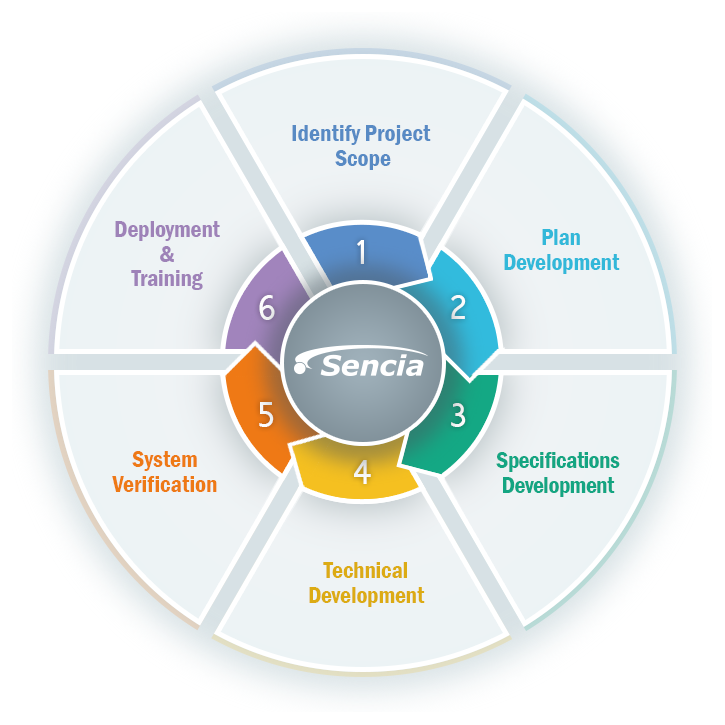Step 1: Identify Project Scope
"Discovery Meeting" The TPM and BA hold a kick-off meeting with your team to go through Sencia’s base product configurations and finalize objectives, timelines, and priorities, as well as identify risks and opportunities.
Step 2: Plan Development
We provide clear documentation that focuses on the elements necessary for implementation. Deliverables include defining: technology requirements and resources, an implementation plan, and integration plans such as single sign-on.
Step 3: Specifications Development
Client and Sencia teams must both approve the configuration plan specification. This process ensures that both teams have an excellent understanding of the plans for integration or interoperability with existing database(s), communication strategy, and graphic strategy as needed. Documentation sign-off from both teams is required.
Step 4: Technical Development
During this phase, we begin configuring your hardware and software. The programming team adds configurations to the base system and conducts other technical work to meet your business cases (e.g. integrations, single sign-on). The TPM assigns tasks and code reviews during this development and also reviews all completed technical development to ensure it meets with specifications and industry standards. Once the TPM is satisfied, the system is then released for system verification.
Step 5: System Verification
Quality Assurance (QA) testing verifies criteria established in the specification are met. Upon system verification, Informetica will address any remaining issues, and correct and test them prior to system launch. Rigorous weekly QA testing ensures that the environment always remains stable.
Step 6: Deployment and Training
Once all validation (user acceptance) testing has been completed successfully, the system is deployed, migration is completed, client site managers are trained, and plans for future refinements are discussed, if necessary. Deliverables include project acceptance and approval for launch, movement of the test site to live servers, testing software for production use, and training for site managers.

Stay connected with Sencia
Find us on Facebook Follow us on Twitter Connect with us on LinkedIn